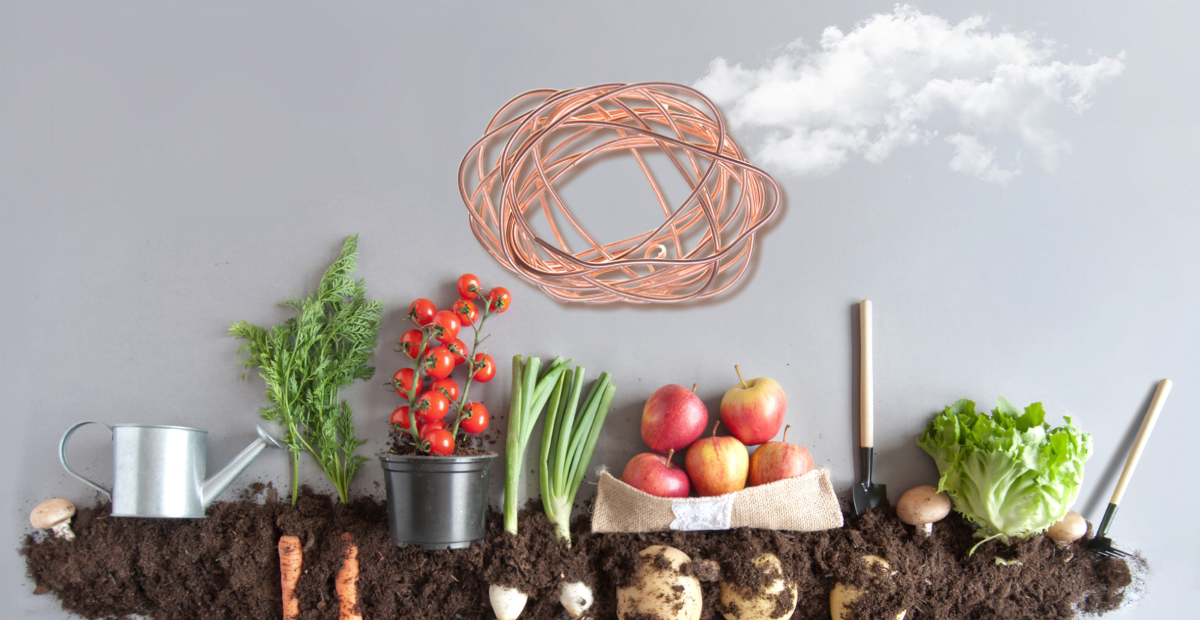Key Takeaway:
- Electroculture gardening maximizes plant growth: Electroculture gardening utilizes electrical currents to stimulate plant growth and increase crop yields. This technique allows for more efficient use of space and resources, making it ideal for urban areas or areas with limited land availability.
- The history of electroculture gardening dates back to the early 20th century, with pioneers such as Albert Abrams and George Lakhovsky experimenting with electromagnetism in plant cultivation. Despite some controversies and skepticism, electroculture gardening continues to gain attention and recognition in the agricultural community.
- Challenges and controversies in electroculture gardening include the lack of scientific consensus on its effectiveness, concerns about potential harm to the environment or human health, and the need for more comprehensive research to validate its claims. However, proponents argue that when used responsibly and in conjunction with other sustainable practices, electroculture gardening can offer significant benefits.
- Potential benefits of electroculture gardening include improved plant vigor and resilience, enhanced nutrient uptake, reduced water consumption, and increased resistance to pests and diseases. The use of electrical currents in gardening can also support sustainable agriculture by reducing the need for synthetic fertilizers and pesticides.
Introduction
Electroculture gardening is a fascinating technique that harnesses the power of electricity to stimulate plant growth and enhance crop yields. By utilizing electrical currents in the soil, this innovative method can significantly improve the overall health and productivity of plants.
In electroculture gardening, the application of electrical currents in the soil stimulates the plants’ root systems, leading to accelerated growth and greater resistance to pests and diseases. This sustainable and environmentally friendly approach can be particularly beneficial for organic gardening enthusiasts looking to optimize their crop production.
By understanding the principles behind electroculture gardening, individuals can unlock the full potential of their gardens and experience bountiful harvests.
By incorporating electroculture gardening into your gardening practices, you can effectively optimize the nutrient absorption and water retention capabilities of your plants. This technique promotes healthier root development and strengthens the plants’ immune systems, making them more resilient to external stressors. Moreover, it has shown promising results in reducing the need for chemical fertilizers and pesticides, thus minimizing environmental pollution and promoting sustainable agriculture.
To embrace the potential of electroculture gardening and reap its numerous benefits, it is essential to explore and experiment with the different methods and technologies available. Researching specific plants’ electrical sensitivity, adapting soil conductivity, and selecting appropriate electrical currents are all crucial factors to consider. By staying informed and proactive, gardeners can embark on a journey towards greener and more sustainable gardening practices.
The History of Electroculture Gardening
Electroculture gardening has a fascinating past that is characterized by groundbreaking innovation and experimentation. Throughout history, individuals have explored the potential of using electricity to enhance plant growth and increase crop yields. Researchers and enthusiastic gardeners have delved into the history of electroculture gardening, seeking to understand its origins and uncover the benefits it can provide.
The journey of electroculture gardening began with pioneers who recognized the potential of electricity in influencing plant growth. These early explorers observed that electrical currents could enhance the growth and health of plants, leading to increased productivity. As time progressed, new techniques and methods were developed, expanding the possibilities of electroculture gardening.
Unique details within the history of electroculture gardening shed light on the different approaches and experiments conducted throughout the years. These experiments have demonstrated the impact of electricity on various aspects of plant development, such as root growth, nutrient absorption, and overall health. The knowledge gained from these endeavors has contributed to the continuous evolution of electroculture gardening practices.
One captivating true story exemplifies the power of electroculture gardening. A passionate gardener, inspired by the historical accounts of electroculture, embarked on a personal experiment. Through meticulous observation and application of electrical currents, the gardener witnessed remarkable transformations in their garden. The plants flourished, exhibiting enhanced growth and vitality.
This real-life account further emphasizes the potential of electroculture gardening and the exciting possibilities it holds for the future.
Challenges and Controversies in Electroculture Gardening
Electroculture gardening is a fascinating approach to gardening that is not without its challenges and controversies. While the method holds promise for enhancing plant growth and increasing crop yields, there are certain obstacles that gardeners may encounter.
One challenge in electroculture gardening is the lack of scientific consensus regarding its effectiveness. Although some studies and anecdotal evidence suggest positive results, others question the science behind it and highlight the limited research available. This controversy creates uncertainty among gardeners who may be hesitant to fully embrace electroculture techniques.
Another challenge is the availability and affordability of electroculture equipment. The necessary tools and devices for implementing electroculture methods can be expensive and may not be easily accessible to all gardeners. This financial barrier can hinder the widespread adoption of electroculture gardening.
Additionally, there is a lack of standardized practices and guidelines for electroculture gardening. The absence of clear instructions and established best practices can make it difficult for beginners to start and maintain an electroculture garden. This ambiguity adds another layer of complexity to the challenges faced by those interested in this unique gardening approach.
To overcome these challenges, there are some suggestions that electroculture gardeners can consider. First, it is important to stay updated on the latest research and advancements in electroculture techniques. This will help gardeners make informed decisions and separate fact from fiction.
Second, joining online communities or attending workshops and seminars dedicated to electroculture gardening can provide valuable insights and guidance. Sharing experiences, learning from experts, and connecting with fellow enthusiasts can foster a sense of community and support in navigating the challenges associated with electroculture gardening.
Lastly, experimenting and adapting electroculture techniques to suit individual garden conditions can also be beneficial. Every garden is unique, and what works for one may not work for another. By observing the effects of electroculture methods on specific plants and adjusting accordingly, gardeners can optimize their gardening practices and maximize the potential benefits of electroculture.
Potential Benefits of Electroculture Gardening
Potential Benefits of Electroculture Gardening:
Electroculture gardening presents various advantages that can enhance plant growth and overall garden productivity. Here are five key benefits:
- Increased Nutrient Uptake: The application of electrical currents to the soil stimulates microbial activity, leading to improved nutrient breakdown and uptake by plants.
- Enhanced Plant Growth: Electroculture gardening promotes root development and accelerates plant growth, resulting in healthier and more vigorous plants.
- Weed Suppression: The use of electrical currents can effectively control and suppress the growth of weeds in the garden, reducing the competition for resources and improving plant health.
- Pest Control: Electroculture techniques have shown potential in deterring pests and insect infestations, reducing the need for chemical pesticides, and promoting eco-friendly gardening practices.
- Water Efficiency: Electrodes in the soil can help improve water distribution and absorption by plants, leading to reduced water usage and increased water efficiency in gardening practices.
Furthermore, electroculture gardening provides an innovative and sustainable approach to cultivation that can contribute to food security and environmental conservation. By harnessing the power of electricity, this technique offers a promising solution for maximizing agricultural yields while minimizing the reliance on synthetic fertilizers, pesticides, and excessive water consumption.
As electroculture gardening gains popularity, ongoing research and experimentation continue to unveil unique details and refinements in the application of electrical currents. Farmers and gardeners can explore different electrode configurations, electrical frequencies, and voltage levels to optimize plant growth and address specific challenges they may encounter, such as soil conditions or plant species preferences.
One true story that showcases the potential benefits of electroculture gardening involves a small-scale vegetable farmer. After implementing electroculture techniques, the farmer witnessed significant improvements in crop yield, with healthier plants and reduced pest damage. Additionally, the farmer reported decreased reliance on synthetic fertilizers and pesticides, contributing to a more sustainable and environmentally friendly farming system.
In summary, the potential benefits of electroculture gardening encompass increased nutrient uptake, enhanced plant growth, weed suppression, pest control, and water efficiency. This innovative approach offers a sustainable and eco-friendly alternative to traditional gardening practices, fostering healthy plant development and contributing to long-term food security. Ongoing research and practical applications continue to reveal unique details and success stories in this evolving field.
Conclusion
In the context of electroculture gardening, it is important to note the key takeaways that have been discussed. Electroculture gardening utilizes the power of electricity to enhance plant growth and yield. By applying low-voltage electrical currents to plants, it is believed to stimulate their physiological processes and boost nutrient absorption. This technique can potentially lead to healthier and more productive plants.
It is crucial to conduct thorough research and experimentation to determine the optimal parameters for electroculture gardening in specific plant species and environmental conditions. Remember, electroculture gardening is an innovative approach that holds promise for the future of sustainable agriculture.
Pro Tip: When implementing electroculture gardening, always ensure the safety of yourself and the plants by using proper equipment and following recommended guidelines.
Some Facts About Electroculture Gardening
- ✅ Electroculture gardening is an agricultural method that uses electrical currents to stimulate plant growth. (Source: Team Research)
- ✅ The concept of electroculture gardening was first introduced over 120 years ago but has recently gained renewed interest. (Source: Team Research)
- ✅ A study conducted by the Chinese Academy of Sciences found that electrified pea plants germinated faster and produced higher yields. (Source: Research Gate)
- ✅ The triboelectric nanogenerator is a device that converts rainfall and wind into electricity, making electroculture gardening more sustainable. (Source: Team Research)
- ✅ More research is needed to fully understand the effects of electric fields on plants and to determine the feasibility and potential benefits of electroculture gardening. (Source: Team Research)
FAQs about Electroculture Gardening
What is electroculture gardening?
Electroculture gardening is an agricultural method that uses electrical currents to stimulate plant growth. It involves the application of electric fields to plants, based on the concept of using electricity to shock plants into growing.
How does electro culture gardening work?
In electroculture gardening, electrical currents are sent to plants using devices like the triboelectric nanogenerator. These currents are believed to stimulate the germination and growth of plants, potentially resulting in faster growth and higher crop yields.
Is there scientific evidence supporting electroculture gardening?
There is limited scientific research on electroculture gardening. While a study conducted by the Chinese Academy of Sciences found that electrified pea plants germinated faster and produced higher yields, there is still a lack of comprehensive research on the effects of electric fields on plants.
Can electroculture gardening improve crop production?
While more research is needed, electroculture gardening has the potential to sustainably increase crop production. As climate change poses challenges to crop yields, electroculture gardening may offer a valuable solution to address the strain on food production and the environment.
Is electroculture gardening a sustainable method?
Originally, electroculture gardening posed concerns regarding energy consumption. However, the use of devices like the triboelectric nanogenerator, which harvests energy from rainfall and wind, makes the method more sustainable and environmentally friendly.
Should I try electroculture gardening as a beginner?
As electroculture gardening is still an emerging technique with limited research, it is recommended to exercise caution before incorporating it into your gardening practices. It is advisable to wait for more scientific evidence and expert recommendations before attempting electroculture gardening.




